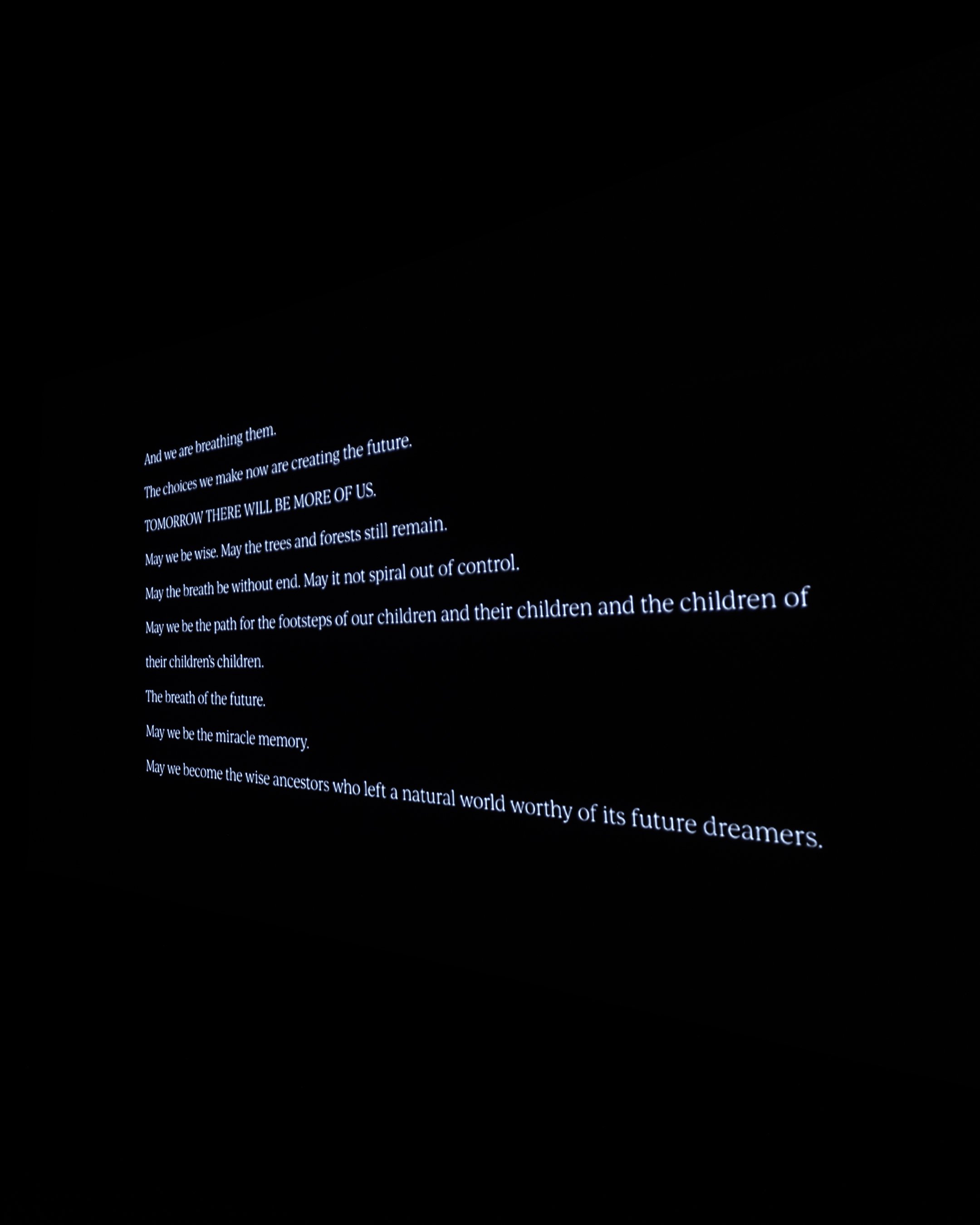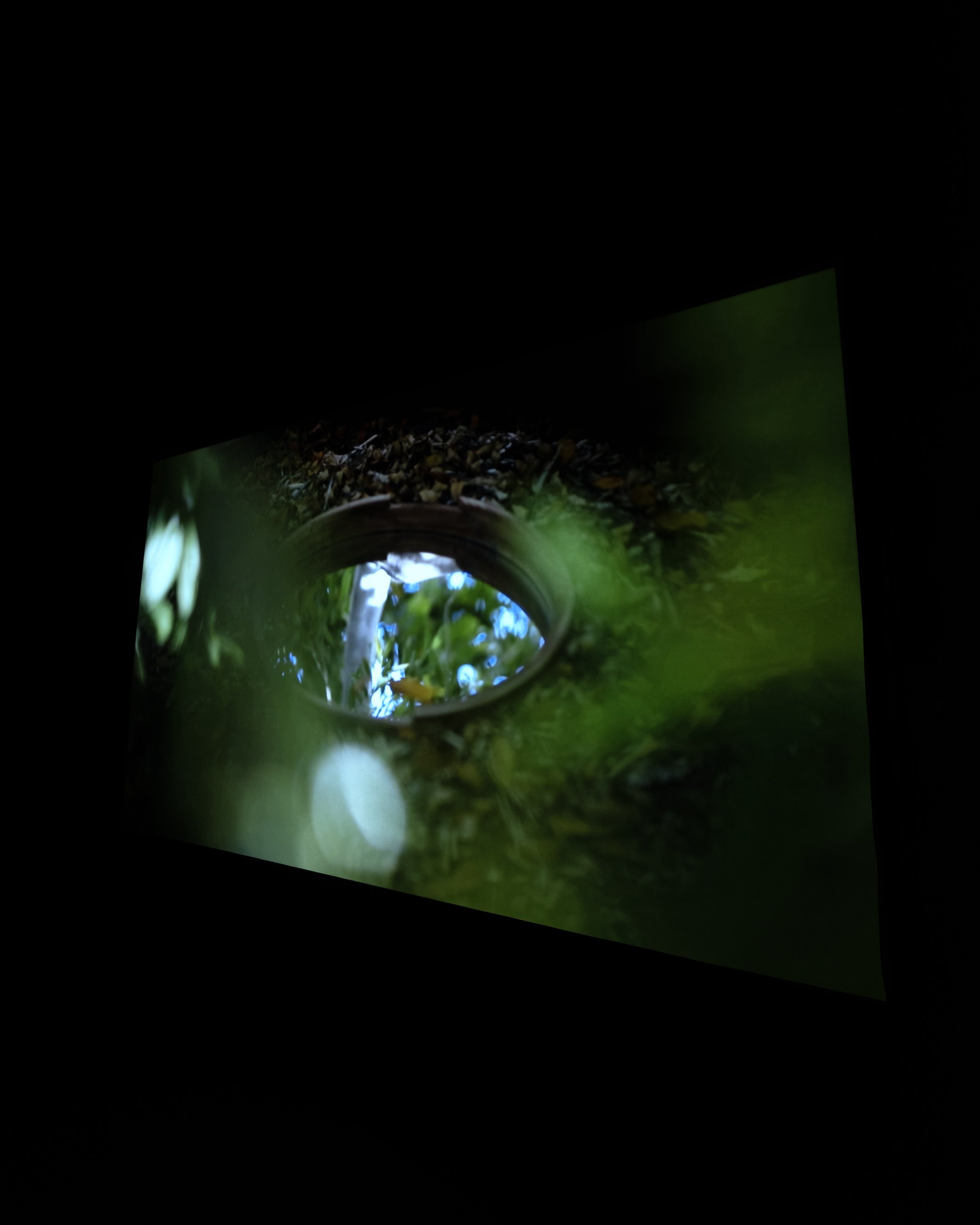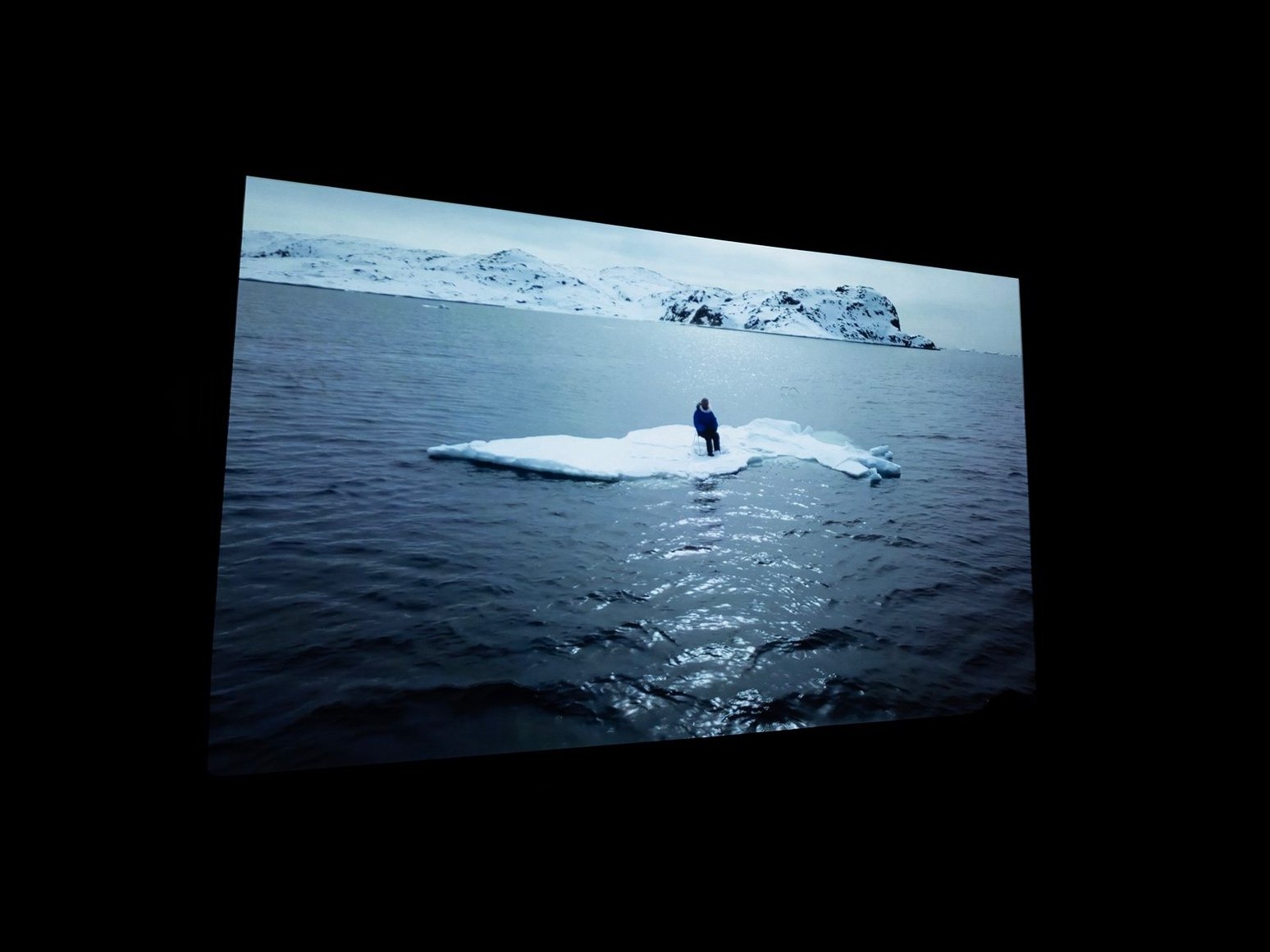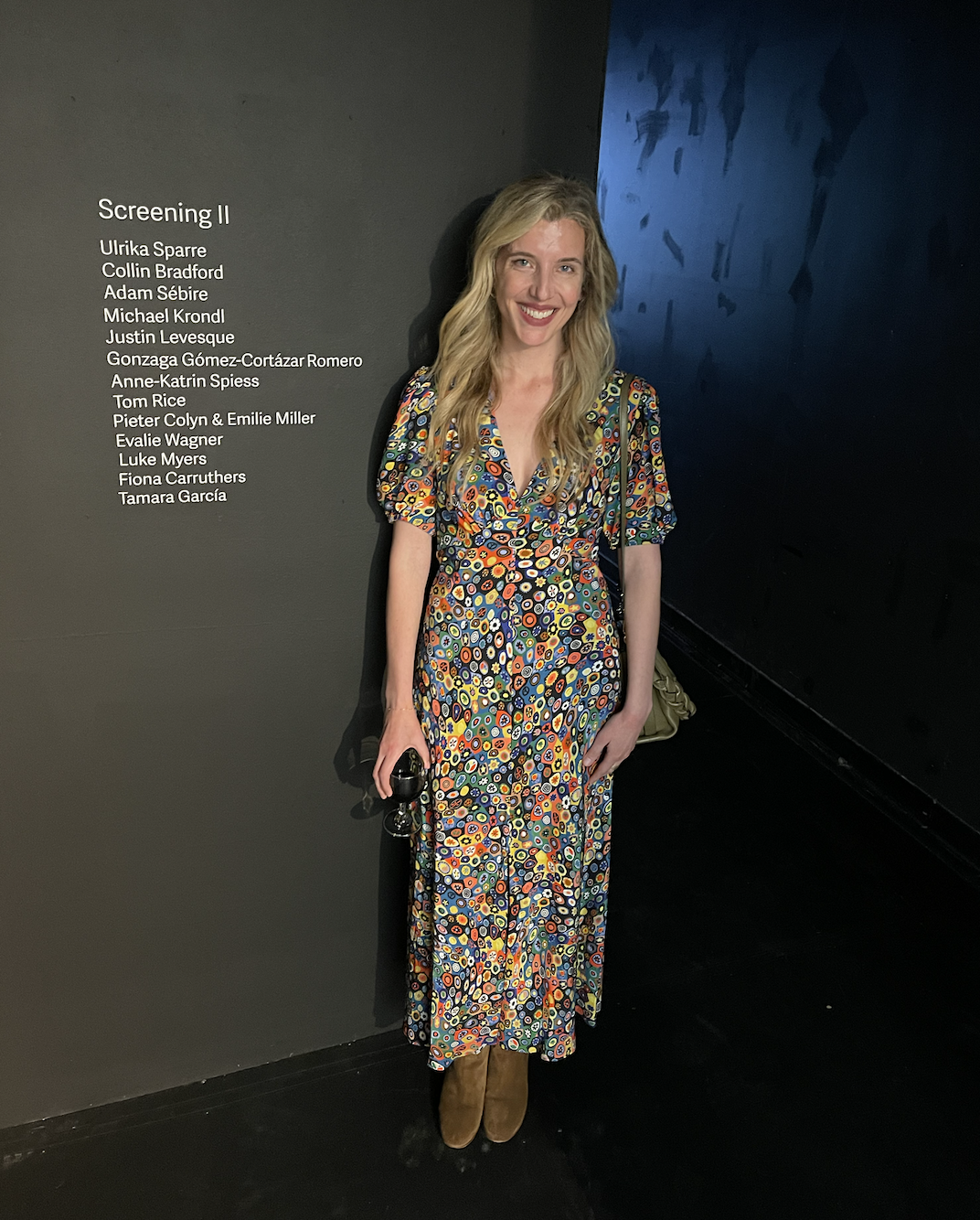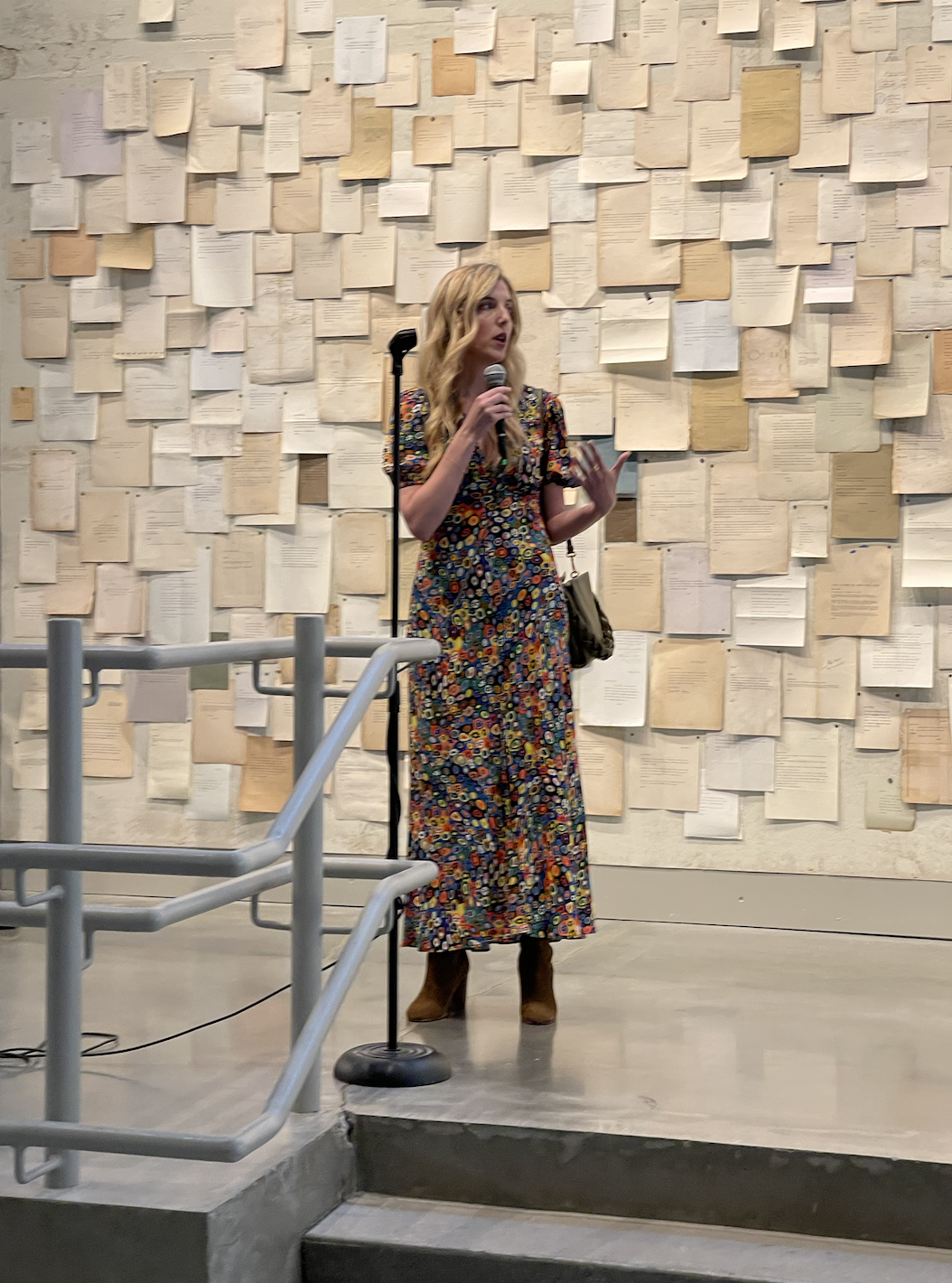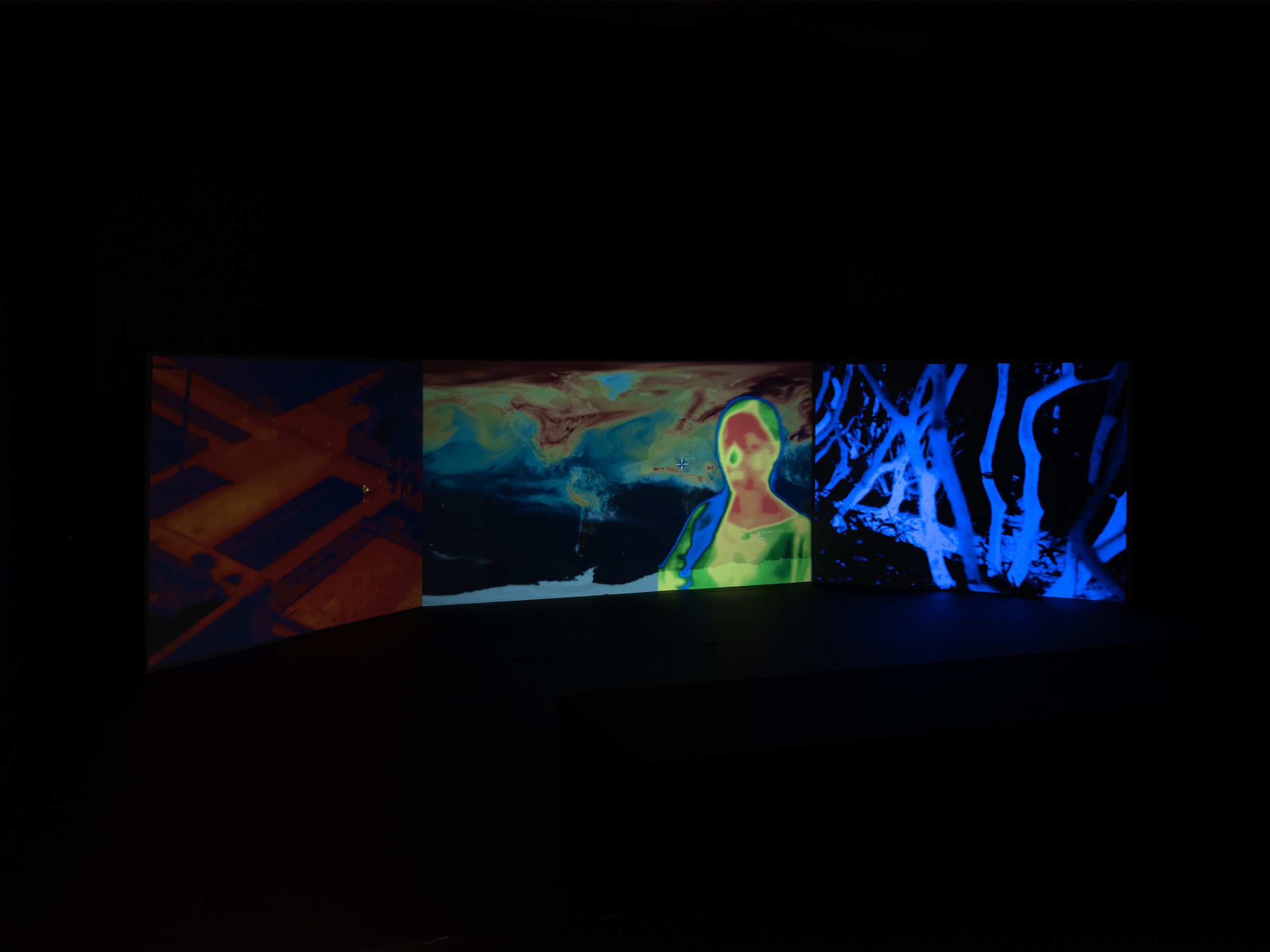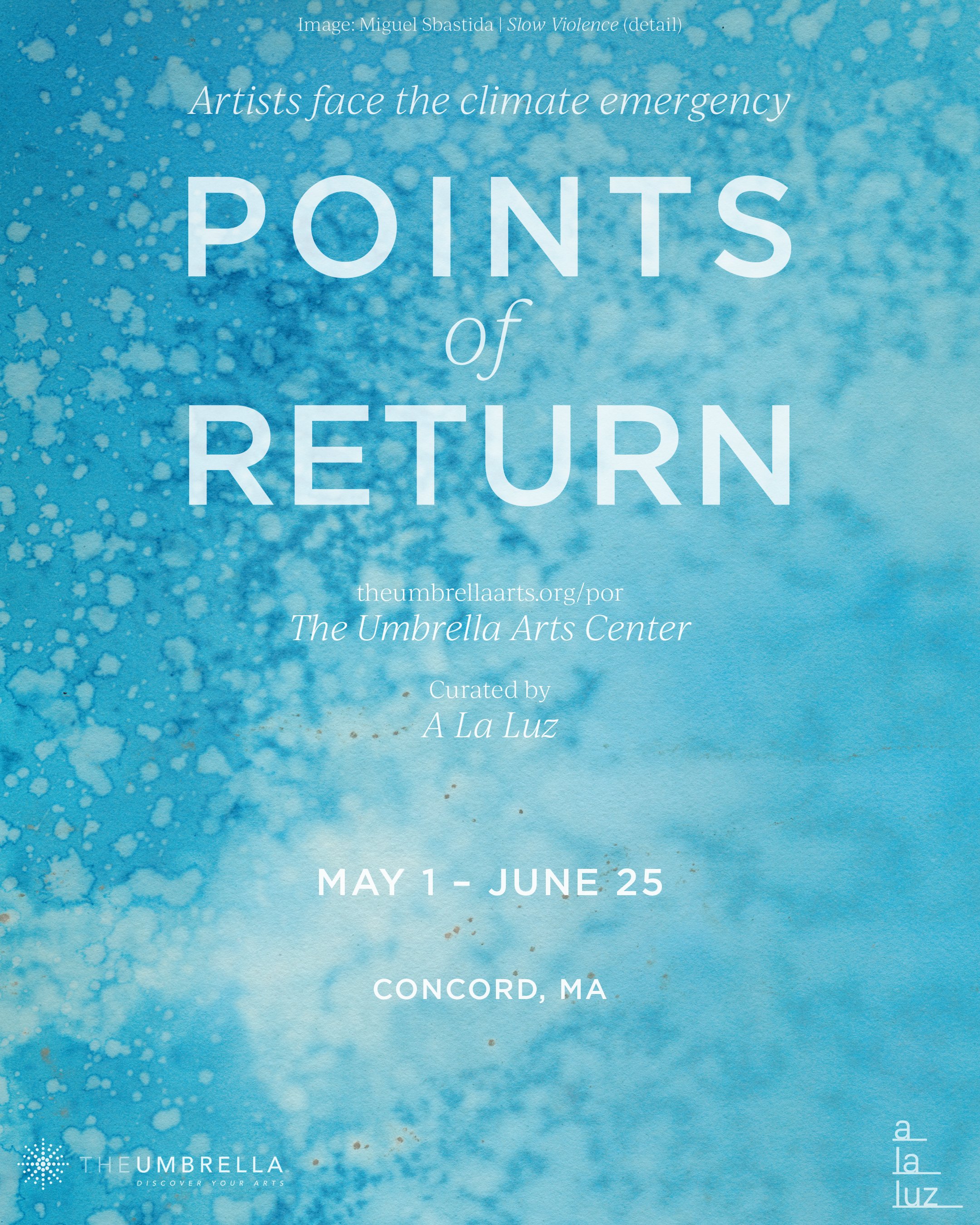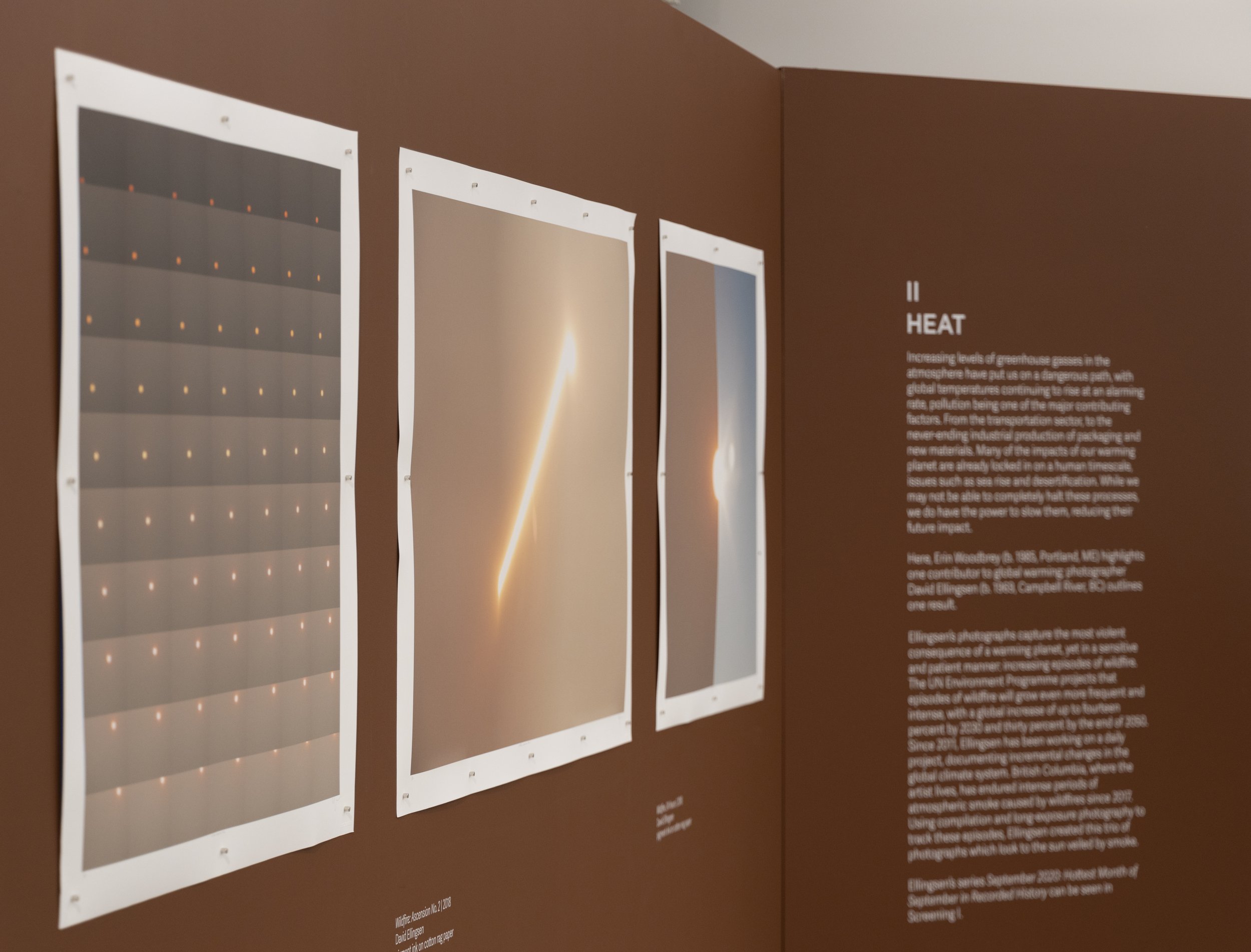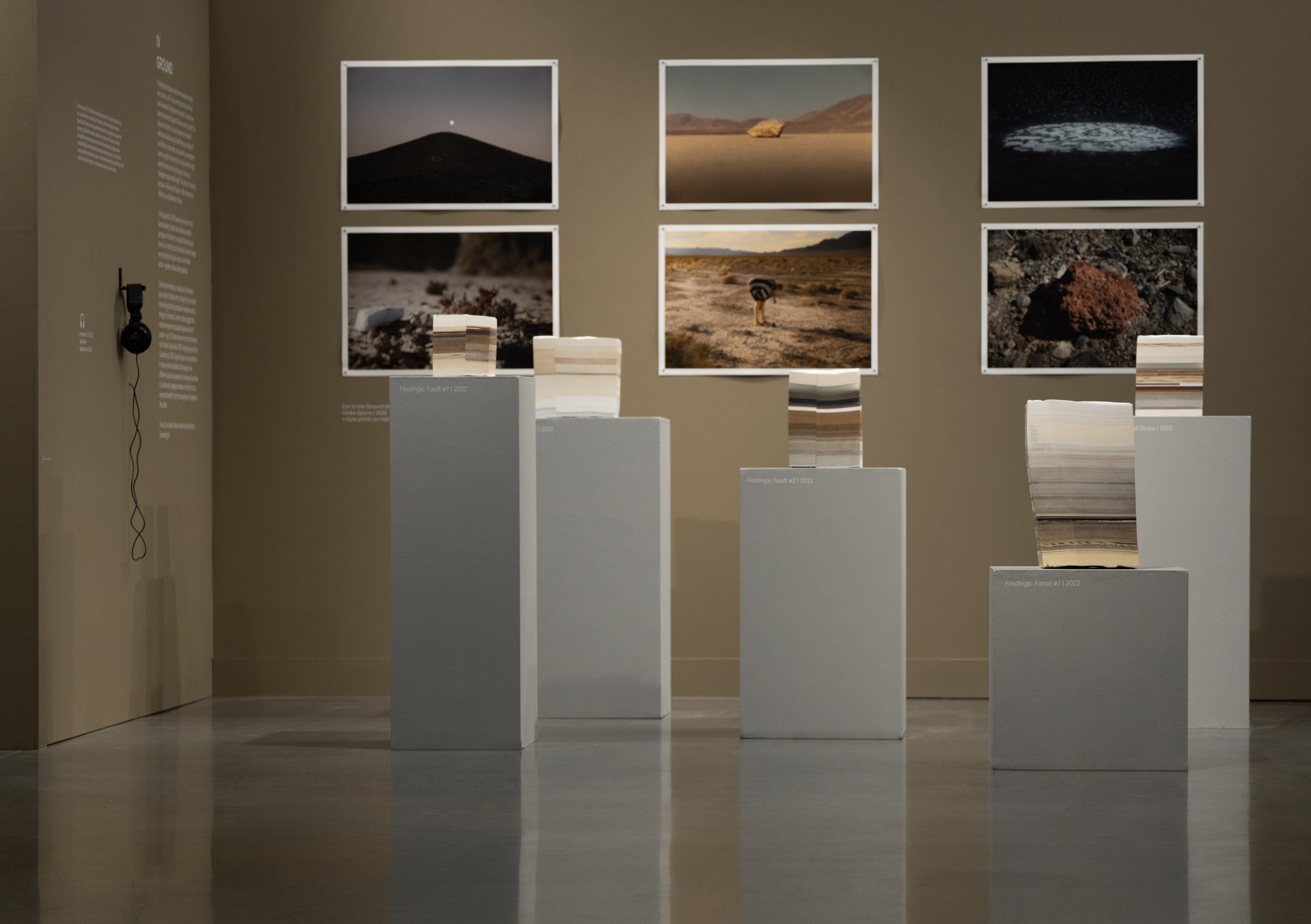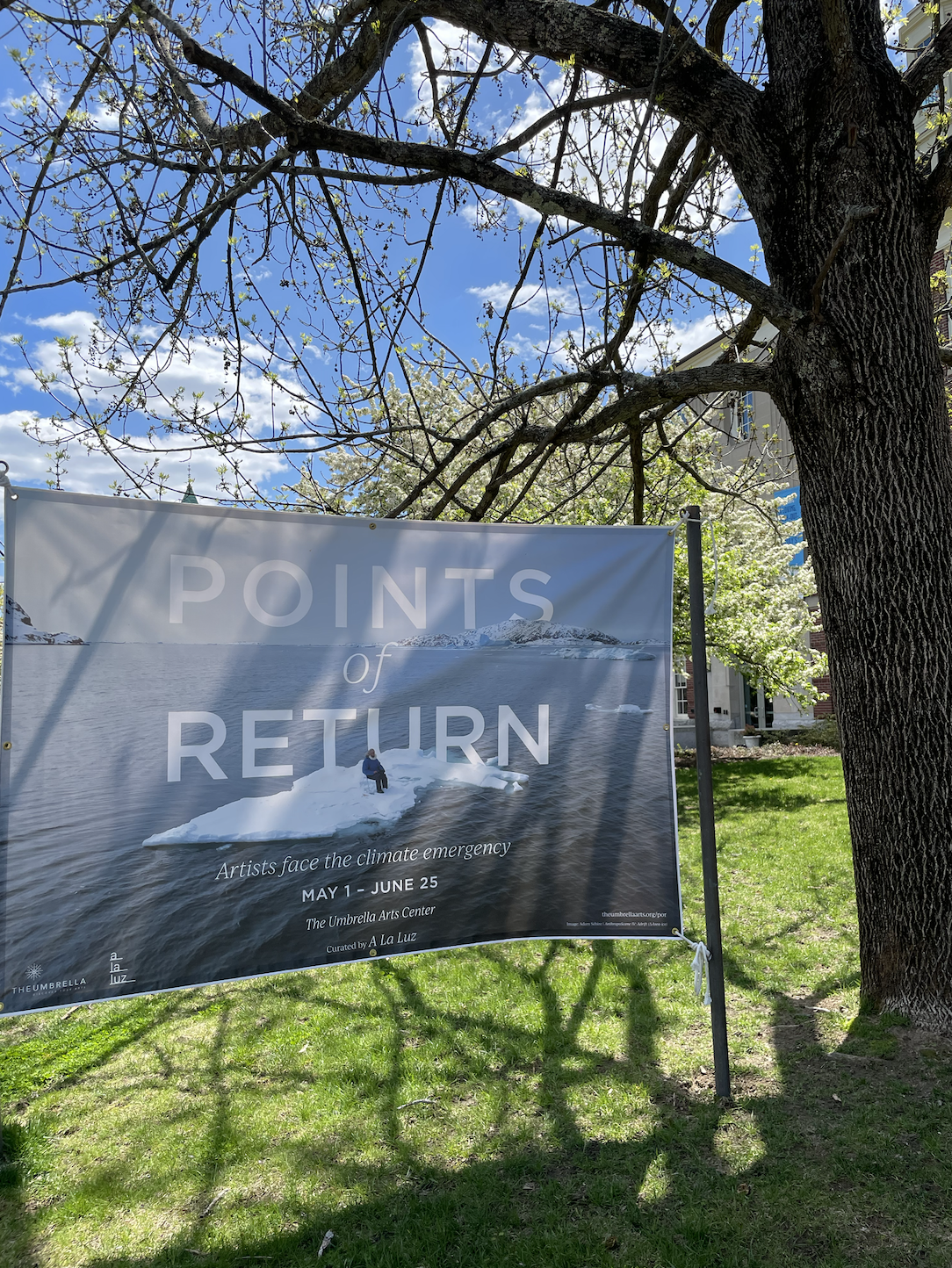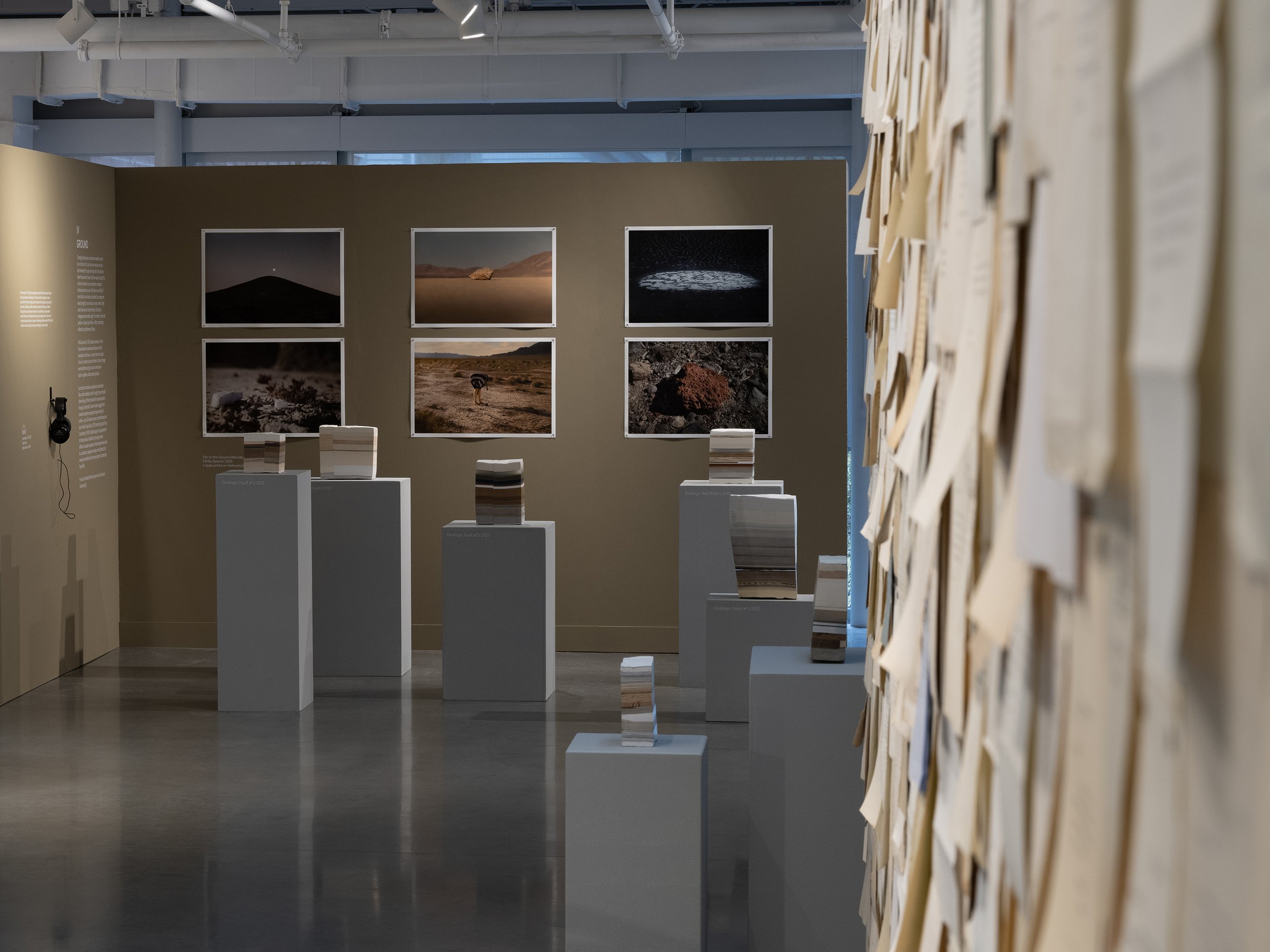POINTS OF RETURN OPENING
BREATHE CONGO: A Reflection On The Growing Deforestation Of Central Africa’s Rainforest
Such a pleasure to attend the opening of the POINTS of RETURN exhibition at The Umbrella Arts Center in Concord, Massachusetts. I continue to be incredibly honored to have a piece that I collaborated on be included in this beautiful & powerful international show, thoughtfully curated by artists David Cass & Gonzaga Gómez-Cortázar Romero of A La Luz — which contemplates climate crisis, environmental issues, along with ideas for the possibility of change via the lens of art.
I encourage you to spend some time with poignant exhibition which includes video art, installation, sculpture, and photography. While the physical exhibition is now closed, you can explore it fully online: www.pointsofreturn.org
It is a physical love letter to our home, our one precious planet, it is a rally cry for change, it is a record of who & where we were at this particular crossroads on our planet. It is an educational & beautiful archive & hopefully a reminder that deep care paired with a sense of possibility is always the antidote to cynicism & powerlessness.
ON SITE
Planetary Intimacies
Felipe de Ávila Franco
David Cass
David Ellingsen
Tanja Geis
Gonzaga Gómez-Cortázar Romero
Miguel Jeronimo
Bethany Johnson
Luke Myers
Miguel Sbastida
Adam Sébire
Ulrika Sparre
Erin Woodbrey
ON SCREEN
Collin Bradford
Fiona Carruthers
Pieter Colyn & Emilie Miller
Emilio Fuentes Traverso
Tamara Garcia
Angela Gilmour
Michael Krondl
Justin Levesque
Fae Logie
Tom Rice
Jacinda Russell
Anne-Katrin Spiess
Evalie Wagner
Virginia Woods-Jack
“It may seem that we have cut our ties, severed our connection to the Earth, uprooted the radical truth on which we depend: nature. Our common home, planet Earth, calls for urgent action. Global warming, the sixth mass extinction of species, the sea drowned in plastic, our waters, air and soil poisoned by abusive human practices—the scientific consensus is practically unanimous, that a bleak future awaits us if we remain passive.
Action is necessary on all fronts. We must reroute, explore new approaches and create hope without allowing ourselves to be overcome by despair. Combining art and science is a clever and creative approach. Where scientific thought does not reach, artistic response does—stirring consciences, generating questions, campaigning to improve the world we live in.
Points of Return presents artworks impregnated with meaning, solid argument, reason and spirituality. They go beyond the human scale. Planting us firmly within the landscape, they promote intimate engagement with the natural world. For, you don't love what you don't know. We need awareness, we need social debate, we need to address the issue from diverse perspectives. We need art and beauty in order to live, to believe that there is still a chance for salvation.”
Begoña Izquierdo, Biologist & Climate Activist
“The burning question is: are we able to bring this back and seize the last possible points of return that we may have?”
Dr Gary Husband, Associate Professor of Education (University of Sunderland)
“A crucial piece of the puzzle is still missing and this is where art and culture—responding to scientific data—comes in, helping each one of us restore our innate emotional bond with our environment and appreciate the importance of preserving it.
Artists are in a unique position, able to creatively present scientific findings in an accessible manner—inspiring collaboration and communal action. After all, if we are to solve the climate conundrum, we must all contribute.”
A La Luz, David Cass & Gonzaga Gómez-Cortázar Romero
BREATHE CONGO: A Reflection On The Growing Deforestation Of Central Africa’s Rainforest, an environmental land art piece, was presented outside the Curatorial Exhibition of the inaugural Stellenbosch Triennale in South Africa in 2020.
How do we help to create an emotional connection to the human impact environmental data available to us? How do we instill a sense of urgency and also a sense of agency? Perhaps through beauty, and the simple experience of walking slowly through a cool and calm spiral of trees, the spiral of life, whose center reveals a mirror which reflects a glimpse of ourselves amidst the trees and sky, we can provide a visceral understanding and personal connection in ways that environmental destruction data may not always offer on its own. The opportunity to observe ourselves and our actions, a reminder that we are active participants within an inseparable whole.
BREATHE CONGO is a living interactive land art piece. A spiraling path of trees. An opportunity to go inward and to reflect. Into the green. Into the breath. Honoring the Green Heart of Africa. The world’s Second Lung. Our African Lung. A meditative path and an elemental gesture contemplating the beauty and fragility of our relationship and interdependence with one another and with our natural world.
Every tree a silent majestic witness, and an urgent reminder,
That we exist now and our collective future is in our own hands.
A spiral, like breath, is both radiating out and drawing inward. Infinite.
Without beginning and without end.
The root of the word ‘spiral’ comes from the Latin spirare: to breath, to inspire, to expire.
This is our earthly contract with the trees and the forests.
We only exist in togetherness.
They are breathing us.
And we are breathing them.
The choices we make now are creating the future.
TOMORROW THERE WILL BE MORE OF US.
May we be wise. May the trees and forests still remain.
May the breath be without end. May it not spiral out of control.
May we be the path for the footsteps of our children and their children and the children of their children’s children.
The breath of the future.
May we be the miracle memory.
May we become the wise ancestors who left a natural world worthy of its future dreamers.
Text: Emilie Miller and Pieter Colyn
The Congo Basin in Central Africa is home to the second-largest tropical rainforest in the world after the Amazon. Often referred to as the “Green Heart of Africa” and the “World’s Second Lung,” the Congo Basin rainforest is around 301 million hectares and spans six countries: Cameroon, Central African Republic (CAR), Democratic Republic of Congo (DRC), Republic of the Congo, Equatorial Guinea, and Gabon.
“A mosaic of rivers, forests, savannas, swamps and flooded forests, the Congo Basin is teeming with life. Gorillas, elephants and buffalo all call the region home. There are approximately 10, 000 species of tropical plants in the Congo Basin and 30 percent are unique to the region. Endangered wildlife, including forest elephants, chimpanzees, bonobos, and lowland and mountain gorillas inhabit the lush forests. 400 other species of mammals, 1,000 species of birds and 700 species of fish can also be found here. The Congo Basin has been inhabited by humans for more than 50,000 years and it provides food, fresh water and shelter to more than 75 million people. Nearly 150 distinct ethnic groups exist and the region’s Ba’Aka people are among the most well-known representatives of an ancient hunter-gatherer lifestyle. Their lives and well-being are linked intimately with the forest.”
https://www.worldwildlife.org/places/congo-basin
-This large and important wilderness region absorbs vast amounts of carbon dioxide which is crucial to
the fight against climate change, helping to mitigate rising global temperatures. Additionally, it helps to
regulate local and global rainfall, to safeguard both water and soil quality, and to control disease.
-According to “Carbon Brief” in the UK, “The effects of tropical deforestation on climate go well beyond carbon,” Deforestation also affects rainfall. At a local level, it changes rainfall and water run-off patterns making the remaining forests drier. It could also have global impacts with scientific models showing that the complete destruction of tropical forests in central Africa would reduce rainfall in southern Europe and the upper and lower US Midwest.”
-France’s Environment Minister Ségolène Royal has stated that researchers believe that deforestation in Central Africa may have catalyzed the most recent Ebola outbreak in West Africa: “This destruction of the natural habitat of fruit-eating bats drove the animals to approach human settlements to find food and the virus may have been transmitted during this increased contact resulting from deforestation...”
Factors that are contributing to deforestation and destruction of the Congo Basin rainforests:
Growing global demand for coffee and cocoa. This region produces 70% of the world’s cocoa.
Unprecedented timber demand, with a specifically rapid growth in demand from China.
Unsustainable, unregulated, and illegal harvesting of wood.
Road-building by industrial logging companies has created opportunity for further illegal logging
and wildlife poaching in remote areas once unreachable.
Large numbers of displaced refugees from armed conflict and civil war have been forced to live
off the land which has severely impacted forests and wildlife. WWF reports the demand for fuelwood and charcoal has led to the deforestation of Virunga National Park in the DRC.
Artists Images from L to R:
1st Row: Emilie Miller & Pieter Colyn
2nd: Miguel Jeronimo, Ulrika Sparre
3rd: Adam Sébire (center image)
4th: David Cass, Adam Sébire, Miguel Sbastida
5th: David Ellingsen, Michael Krondl, Bethany Johnson, Ulrika Sparre
6th: Emilio Fuentes Traverso, Adam Sébire, David Cass, Bethany Johnson, Ulrika Sparre
